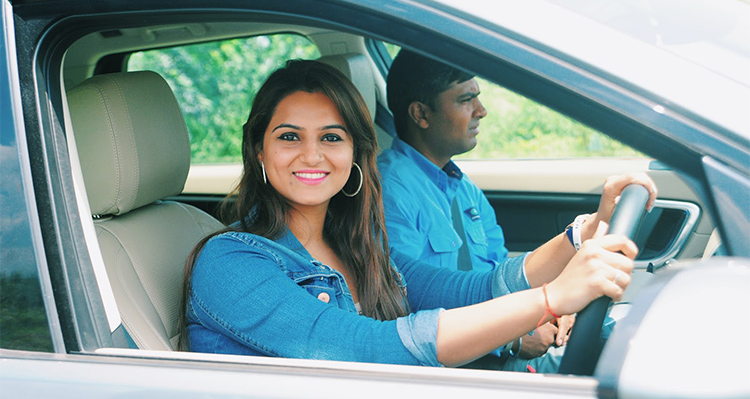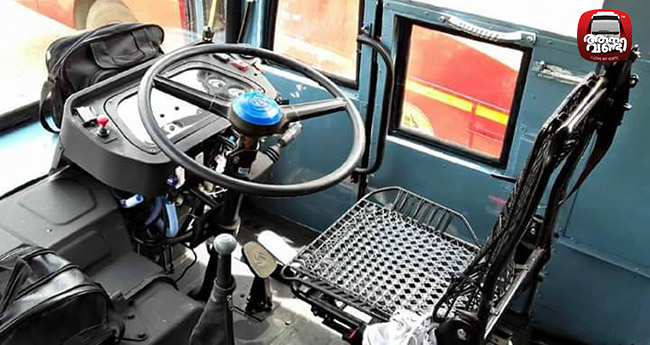10 essential driving tips for beginners/learners
Once you know how to drive a car, the sheer feeling of mobility and freedom that this life skill offers has to be experienced to be believed. Many beginner/learner drivers make common mistakes while learning how to drive, and the whole process of learning to drive becomes more traumatic than enjoyable. We gives you a few tips on how you can improve the way you learn to drive a car.
1. Carefully observe road intersectionsnad junctions

A common reason for failing at junctions is stopping on zebra crossings or on stop lines. Candidates also fail to make effective observations and exercise good judgement especially when emerging at a T-junction or crossing the path of oncoming cars either because they are in a hurry or feel pressurised by cars behind them. Approaching junctions too fast and lack of observation results in the number one test fail. On approaching a junction, use your mirrors, slow down to an appropriate speed so that it gives you plenty of time to observe the road, other vehicles and pedestrians.
2. Lack of steering control

Turning the steering wheel too early or too late is a common mistake. The correct method for steering is known as the pull-push technique. Your hands should never cross over the top of the wheel and your arms should never cross over each other. Do not allow the wheel to spin freely. To straighten the wheels you should turn the wheel back to its straight position manually.
3. Parking nightmares

Reverse parking is one of the trickiest tasks. The trick to an accurate and safe reverse parallel park is to have a set reference point that you can use each time. As a guide, your reference point should be about one-third from the rear of your vehicle. So, it may be the door lock, the edge of the door or halfway across the window on the rear passenger side. You can then use this point as the place you reach before you begin to reverse into the parking spot. Find a quiet street and have a few practice runs to find the reference point for that car.
4. Failure to make proper use of your vehicle’s gears

Make sure you are in the right gear before you move away, as pulling out in third and stalling will cause you a world of problems and unnecessary stress. If you are fortunate to have a rev counter in your car, your engine should rarely go above 2,000 revs during normal travel. If it is above this, you should change to a higher gear. If you are much below this and experience what is called engine knocking then shift down to a lower gear. While you can slow the vehicle down by shifting down and using engine braking, it should always be a secondary braking technique, in addition to applying the brakes. It should never be the primary retardation technique.
5. Reversing around a corner

Control, accuracy and observation are the key things to this manoeuvre. Hitting the curb, swinging wide and lack of observation are common reasons for failing a driving test. During the manoeuvre, use an appropriate speed. Keep it slow, giving yourself enough time to judge your distances correctly, use your mirrors and take time to observe your environment before you start reversing. Give way to all other road users if necessary. It will only take a few extra minutes and keep you and others out of harm’s way. Also, don’t forget to check over your right shoulder before turning since there will always be some blind spots that your mirrors won’t be able to eradicate entirely.
6. Failure to make effective use of mirrors

Under use of mirrors is another common mistake, especially when changing lanes. Remember, before any speed change you must check your mirrors. Basically whenever you think “I’m about to do something” you need to check your surroundings in the mirrors. Roughly speaking, between 25 and 50 per cent of your driving time should be glancing at the mirrors to see how road conditions change.
7. Driving too slowly
Driving too slowly is seen as a sign of the driver lacking confidence. Use of appropriate speed is very important. If the road you are on is clear and it is safe to go, then drive at the speed limit and do not unnecessarily slow down. Driving too slow can be frustrating for other road users causing them to become impatient and take unsafe actions such as overtaking, which can be very dangerous. When joining a main road quickly get up to speed.
8. Unnecessary use of horn
Honking over the slightest thing shows the driver’s lack of patience or confidence. Go easy on the horn. The car in front of you can’t fly over the traffic jam. One also loses his cool which could lead to road rage.
9. Move away correctly from stationary positions

When you move off, make sure you take the correct precautions. Use the mirrors to take care of blind spots and signal if necessary. Make sure you don’t cause any oncoming vehicle to slow down or change direction due to your actions. In general you should be looking for a gap of 4-6 car lengths in the oncoming traffic, and move into that gap when starting from standstill.
10. Practice makes you perfect

The bottom line is, make sure that you have sufficient practice before you take the test. A lot of learners think that they can take the test with the minimum amount of training, and hope to pass. That’s a false belief. If you’ve failed, then make sure you continue with the training so you’ll keep up to the required standards. Many people often fail through lack of continuity of their training. Even an hour a week is better than no training at all.



















